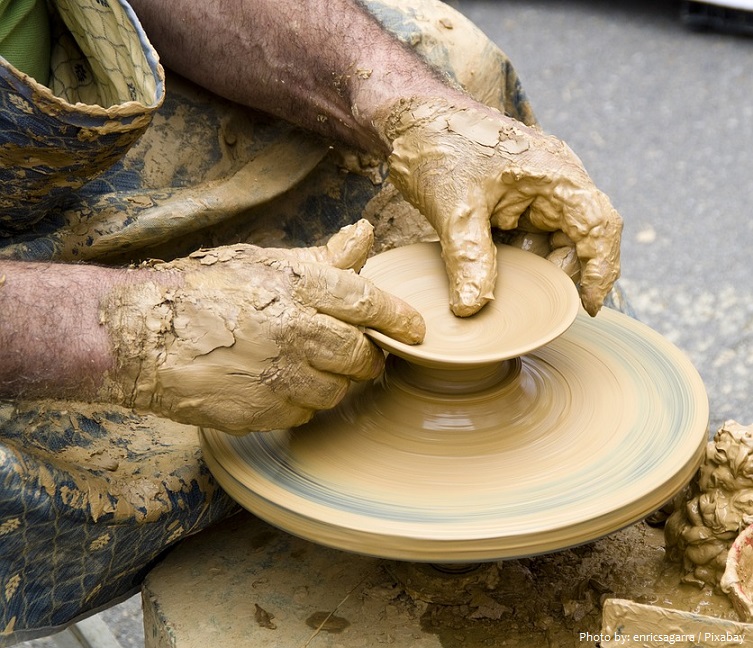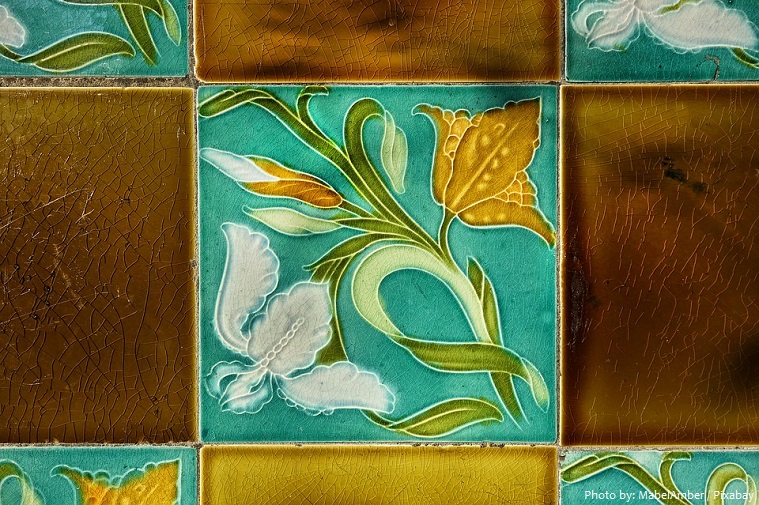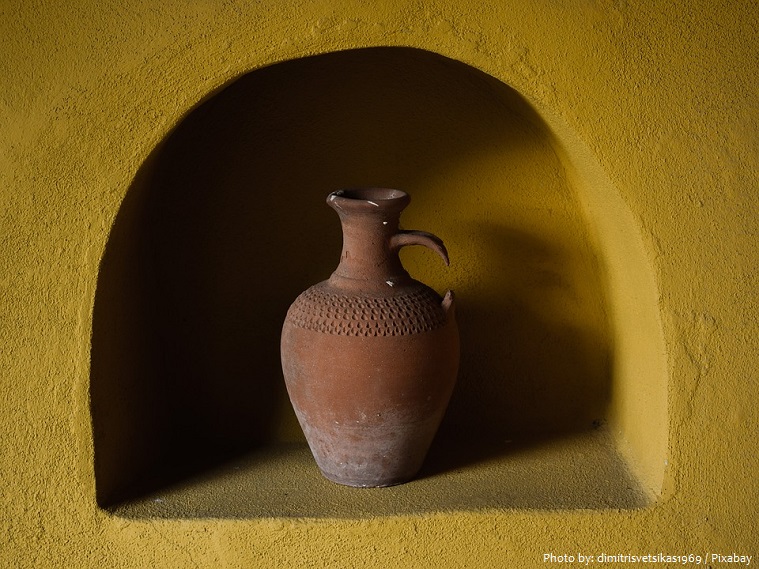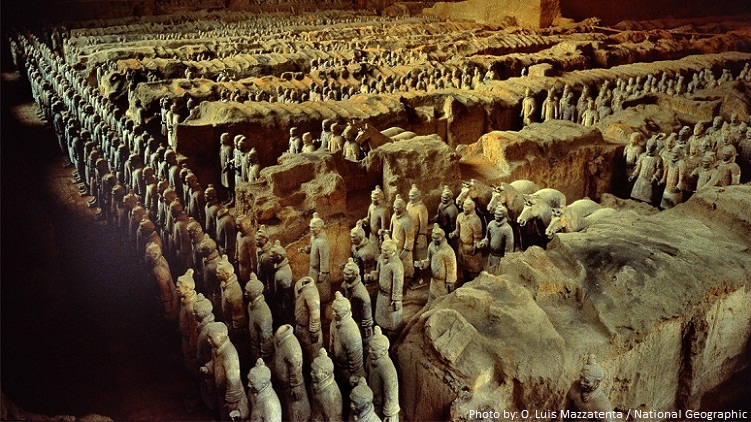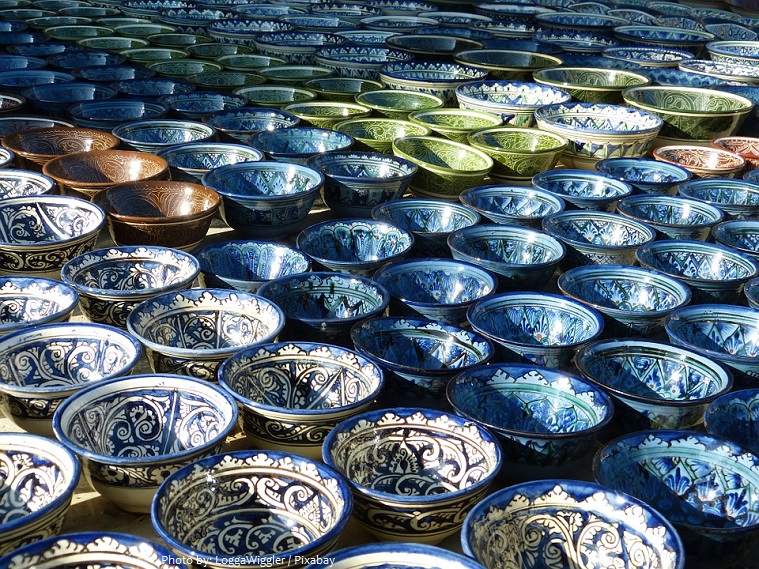Ceramics are classified as inorganic and nonmetallic materials that are essential to our daily lifestyle.
Common examples are earthenware, porcelain, and brick.
Ceramics are generally made by taking mixtures of clay, earthen elements, powders, and water and shaping them into desired forms. Once the ceramic has been shaped, it is fired in a high temperature oven known as a kiln. Often, ceramics are covered in decorative, waterproof, paint-like substances known as glaze.
The word “ceramic” comes from the Greek word κεραμικός (keramikos), “of pottery” or “for pottery”, from κέραμος (keramos), “potter’s clay, tile, pottery.”
The earliest known mention of the root “ceram-“ is the Mycenaean Greek ke-ra-me-we, “workers of ceramics.”
The word “ceramic” may be used as an adjective to describe a material, product or process, or it may be used as a noun, either singular, or, more commonly, as the plural noun “ceramics.”
As practical materials, ceramics have a history almost as old as the human race. Traditional ceramic products, made from common, naturally occurring minerals such as clay and sand, have long been the object of the potter, the brickmaker, and the glazier.
The oldest known ceramic artifact is dated as early as 28,000 BC, during the late Paleolithic period. It is a statuette of a woman, named the Venus of Dolní Věstonice, from a small prehistoric settlement near Brno, in the Czech Republic.
The first examples of pottery appeared in Eastern Asia several thousand years later. In the Xianrendong cave in China, fragments of pots dated to 18,000-17,000 BC have been found.
It is believed that from China the use of pottery successively spread to Japan and the Russian Far East region where archeologists have found shards of ceramic artifacts dating to 14,000 BC.
One of the most important breakthroughs in the production of ceramics was the invention of the wheel, in 3,500 BC. The wheel allowed for the utilisation of the wheel-forming technique to produce ceramic vessels with radial symmetry.
Meanwhile, ceramic pottery evolved in its use of increasingly elaborated paintings, so that these objects eventually became genuine pieces of art.
The Terracotta Army is a collection of terracotta (type of ceramic) sculptures depicting the armies of Qin Shi Huang, the first Emperor of China. It is a form of funerary art buried with the emperor in 210–209 BC with the purpose of protecting the emperor in his afterlife.
Porcelain was invented during the Han dynasty (206 BC – 220 BC) at a place called Ch’ang-nan in the district of Fou-Iiang in China.
During the Middle Ages, trade through the Silk Road allowed for the introduction and diffusion of porcelain throughout Islamic countries first and later in Europe.
The Industrial Revolution of the 18th and 19th centuries saw rapid improvements in the processing of ceramics, and the 20th century saw a growth in the scientific understanding of these materials.
The modern ceramic materials, which are classified as advanced ceramics bear little resemblance to their origins. They offer unique and amazingly powerful physical, thermal and electrical properties that have opened up a whole new world of development opportunities for manufacturers in a wide range of industries.
Advanced ceramics are used by the aerospace, automotive, defense, environmental, fiber-optic, and medical technologies. They are also used in cellular phones and personal computers. Each of NASA’s space shuttles has a coating of roughly 34,000 ceramic tiles, which protect it from the searing heat (up to 2,300 °F) produced during reentry into the atmosphere. Thus, advanced ceramics are an integral part of the modern technological revolution.
Bioceramics are ceramic materials specially developed for use as medical and dental implants. They are usually used to replace hard tissue in the body like bone and teeth.

